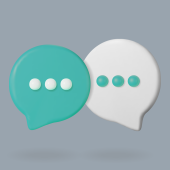Do you start your day checking off the easiest items on your to-do list only to lose focus when you start complex tasks? Or do you find that, despite starting work early, you do your best work in the evening?
According to Daniel H. Pink, author of When: The Scientific Secrets of Perfect Timing, people who understand their chronotype are more likely to be productive, creative, focused, and engaged — much of which depends on our energy cycles.
Our energy cycles are determined by the clock inside our heads. The duration of that clock, or chronotype (our sleep and waking preferences), is determined by age and genetics, with the timing of the energy cycles changing daily based on your sleep and relative light exposure.
What type of person am I?
Our brain power fluctuates during the day and understanding when it’s at its peak can help us to manage our schedule. We can try to identify these peaks by discovering our chronotype.
People tend to identify as the following chronotypes:
- Morning-types: Early to bed and early to rise, they prefer doing activities earlier in the day, tend to be less anxious, and are more conscientious and agreeable.
- Evening-types: Late to bed and late to rise, they prefer doing activities later in the day, tend to have an aptitude for creative thinking, and are more neurotic and more open to experience.
- Neutral or intermediate types: They do not show a marked tendency for either direction.
Tests can be helpful tools to identify whether we are a morning or evening person — known as a lark or an owl, respectively.
Take the test
- Center for Environmental Therapeutics
- Munich ChronoType Questionnaire (MCTQ), which distinguishes between people’s sleep patterns on workdays (when they have to be awake at a certain hour) and their “free days” (when they choose the time to wake up).
Are you a lark or an owl?
The best way to organize our day, according to Pink, is to understand which bird we are:
- A lark rises early and feels energized during the day but wears out by evening.
- An owl wakes after sunrise, detests mornings, and starts peaking in the late afternoon or early evening.
- A third bird falls in the middle and is the one approximately 65 percent of people identify with.
He suggests asking three questions based on your free day:
- What time do you usually go to sleep?
- What time do you usually wake up?
- What is the middle of those two times — that is, what if your midpoint of sleep? (e.g., if you typically fall asleep around 11:30 pm and wake up at 7:30 am, your midpoint is 3:30 am).
Larks tend to have a midpoint around 3:30 am while owls have a 5:30 am midpoint.
Matthew Walker, in Why We Sleep, explained that, if a night owl is forced to wake up too early, their prefrontal cortex (which controls high level thoughts and emotions) remains in a disabled “offline” state. “Like a cold engine after an early-morning start, it takes a long time before it warms up to operating temperature and before that will not function efficiently.”
Organizing the workday
Pink notes that people move through the day in three stages:
- Peak: best for analytic work;
- Trough: best for administrative work; and
- Recovery: best for insight work.
During the peak, we are at our best (hard to distract and positive). This is the time for analytical work that requires focus and attention. For larks this is early morning, for owls this is late afternoon to evening, and for the third bird this is early to mid-morning.
During the trough (early to mid-afternoon for many) when we are most distracted, people’s performance and mood decline. This is a good time to do administrative work such as sending emails that don’t require a lot of attention.
During recovery we are in a better mood but not as focused. This is a good time to solve “insight problems,” which require creativity and divergent thinking. For larks and third birds, the best time is late afternoon/early evening; for owls, it’s morning.
Managers often unrealistically expect their employees to be at their best at all hours. According to Professor Christopher M. Barnes, employees “take a few hours to reach their peak levels of alertness and energy — and that peak does not last long,” declining after lunch, hitting a low around 3 pm. “We often blame this on lunch, but in reality this is just a natural part of the circadian process.”
Experimenting with our daily tasks and calendars is the best way to understand what suits our productivity.
Or are you a bear, wolf, lion, or dolphin?
If you don’t see yourself represented in the birds, US clinical psychologist Dr Michael Breus developed a more recent online chronotype quiz that may suit you better. Similar to the lark or owl method, this chronotype can be used to structure your day.
- Bear: Rises around 7 am, slow to start the day, often foggy and fatigued for the first few hours. Typically hard working, diligent, adaptable, bears take direction well and thrive in team environments. They should focus on complex work between 10 am and 2 pm, less complex tasks between 2 pm and 4 pm, and aim to relax and unwind between 4 pm and 10 pm.
- Wolf: Late to bed, they dislike getting up in the morning, needing caffeine to wake up. Similar to an owl, they should focus on less analytical tasks between 10 am and 2 pm, are at their most productive around 2 pm, and could undertake creative work at either 12 pm or around 6 pm.
- Lion: Early risers (between 5 am and 6 am), they are typically positive, intelligent, hardworking, and health conscious. There are at their most productive in the morning and peak before midday. They should focus on less complex tasks between 12 pm and 4 pm.
- Dolphin: Highly intelligent, they often ruminate on successes and failures while in bed and often stay up late or have difficulty sleeping. It’s best for them to engage with easier tasks between 8 am and 10 am and again between 12 pm and 4 pm. Their peak focus time is between 10 am and 12 pm.
How to use chronotype for productivity
No matter the animal, every chronotype has its strengths and weaknesses. Find what works best for you so your days are efficient and recharging.




